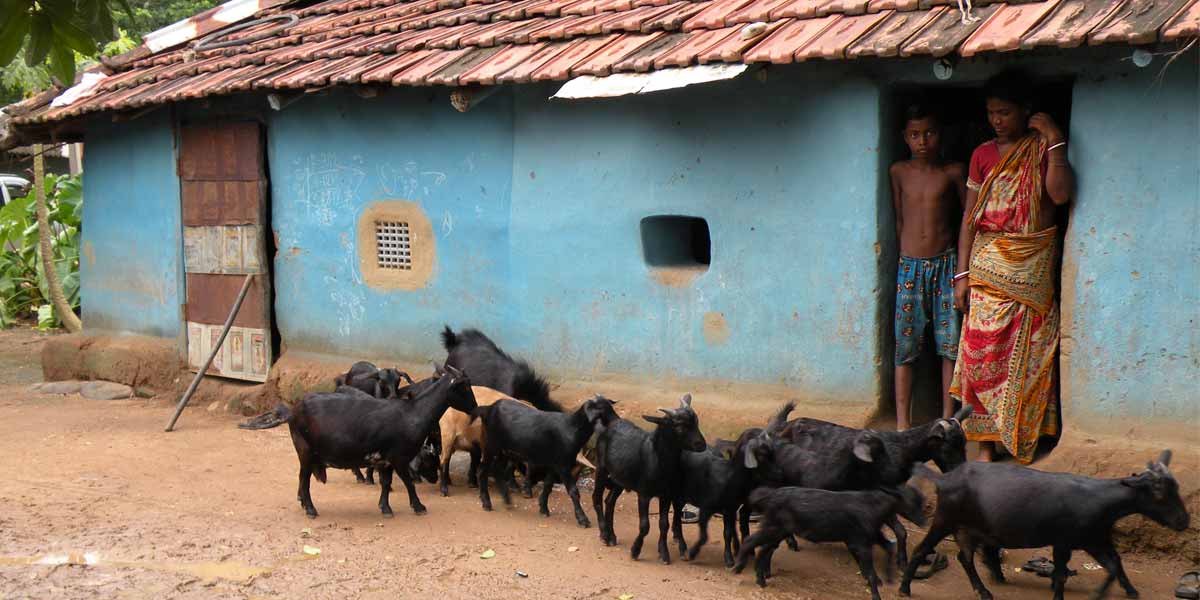
Diary AICP [An All India Coordinated Project] – the Recce in Bengal
Last Updated on 16 March 2024; Published on 5 February 2023
There was an All India Coordinated Project that lasted for some years starting in 2011-12. We carried out extensive video documentation in the second half of 2017 and finally produced a documentary in early 2018. The footage was collected from some fourteen states across India.
The program was on improving livelihood management of the Scheduled Caste community across the Indian States introducing different scientific interventions at the grass root level that are affordable and sustainable.
The idea is to make the impoverished people of this vulnerable segment of society sustain their livelihood even at the end of the program.
People in rural India are very much familiar with livestock from their childhood, possibly soon after birth. Farming and livestock are inseparable.
But a lack of knowledge and scientific approach are what separate them from making a living out of it and languishing in poverty. Poultry farming is very common and so is goat rearing. But without a proper vaccination and de worming takes a heavy toll almost every season. This is one instance where a set of methodical and scientific techniques could turn the tide.
Like many similar ones, the idea of this program was to initiate know-how and practice among the selected beneficiaries and spread the knowledge among other villagers.
The selection of the beneficiaries is somewhat related to finding a break-even of need and sustainability among the people.
Our job was to capture the inventions through the eye of the beneficiaries and their livelihood. It was moderately a large project in terms of locations to visit and subsequently the footage to deal with. So the template of ‘first recce-then shoot’ was obvious for the video documentation of this ‘All India Coordinated Project’.
There were five stages of pre-production and production through the post that were held in the latter half of 2017.
- Recce in Birbhum and Bankura district of West Bengal, India in Aug 2017
- Recce in the state of Odisha, an eastern Indian Province in Sept 2017
- Shooting in Birbhum & Bankura in Oct, 2017
- Shooting in several locations of Odisha in Nov 2017
- Shooting in five states in South India in Dec 2017
Organizations from many other states provided footage, in their capacity and helped us register their mark in the documentary. But that’s something that pertains to the post-production, a different story altogether.
Recce in Birbhum and Bankura district of West Bengal, India in Aug 2017
I, along with the program coordinator and the Director of the implementing organization, the Vivekananda Institute of Biotechnology or VIBSRAN, a South 24 Pargana NGO, based at Nimpith, rushed out on an overcast August morning from Kolkata. The destination was Dwaronda, a small village in the Ilambazar block of Birbhum district, some 180 Km off from Kolkata.
The journey was uneventful, except for one routine puncture of a rear tire, not far away from our destination.
NMTC: Dwaronda, Illambazar, Birbhum
Dwaronda is a small non-descript village in Birbhum where we met with the chief executive officer of one partner organization in this program viz. Nayantara Memorial Charitable Trust or NMTC.
There were many organizations across India that formed zone-wise clusters to implement the program of enhancing livelihood management of the Scheduled Caste community through interventions of science and technology at the basic level.
NMTC is one such organization in the Eastern Indian state of West Bengal that carried out this program and we’re there for the pre-shoot visit or recce in a few villages that it rendered the program to.
This area has a significant scheduled caste population and NMTC, in the village of Dwaronda, Block Illambazar, Birbum brought in many interventions under this program. One markedly different pertinent to education is remedial education, as they call it. The idea is to bring back the dropped-out youth to a somewhat informal system of education.
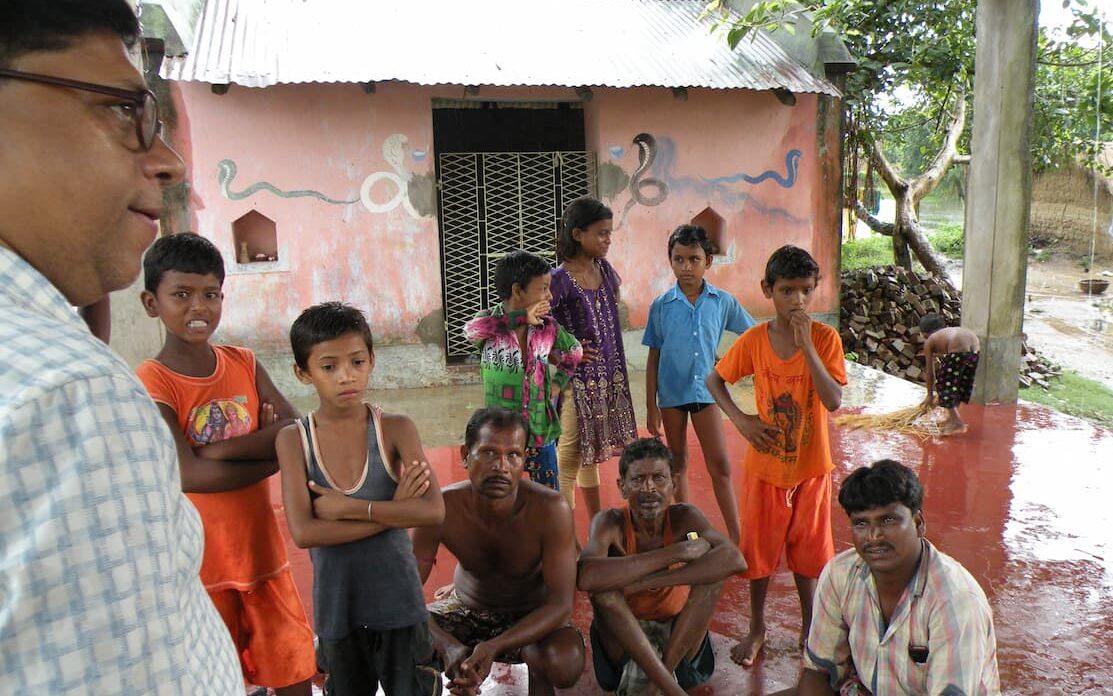
The objectives of a recce or Reconnaissance for Documentary film production
While conducting a recce, one should try to find a character to tell the story. The focus should be on how to interweave a few threads to form the very texture of the story.
I always look out for a bright and responsive character to put him or her in the central position of the storyline. If failed to find such a person, I take the approach of building a rather generic sequence in my mind first and then fit in someone to make it more humane. It often happens that you find a character or a scene set up during recce that seems suitable and later you end up in a completely different scenario.
That’s part of the game. For a long documentary, this would be a 30-minute one finally, it’s important you collect information and resources to the maximum possible extent during recce, come back to your den and carve out a structure. This structure could be approximate and might change later. But it’s important to have one in place instead of scratch before your camera starts rolling.
After your recce is over on location, you’re likely to have
- Characters
- An idea of how the visuals would revolve around him or her. Like establishing him or her at the backdrop of the character’s household.
- Talking head – the very person, the program beneficiary, and the nodal person
- Action photographs/ Clips – a guide for the shooting/ production
Structuring after recce
Now, with the information and location materials like photographs, and maps, you’re about to start building the structure of the film. There could be a number of sequences while creating a structure and they may not be in order. And that’s perfectly okay at this stage. But sequencing you must. Every sequence has a beginning, a middle, and an end. Sequences can be regarded as micro-films.
I would recommend using Freemind as the creator of your mind map. The source page containing a download link can be found here. The mind map helps create a visual representation of what comes to your mind in a random manner. Later, you could rearrange their order and reform.

Coming back to NMTC, meanwhile, we had moved from village one, possibly Dwaronda, to another village named Srishchandrapur. We saw some interventions here in relation to farming. Seed treatment, and bio inputs to reduce the CST of farming. I found the villagers were initially a little shy, but later, with some familiarity with us, they started expressing their takes on the program components on both pros and cons.
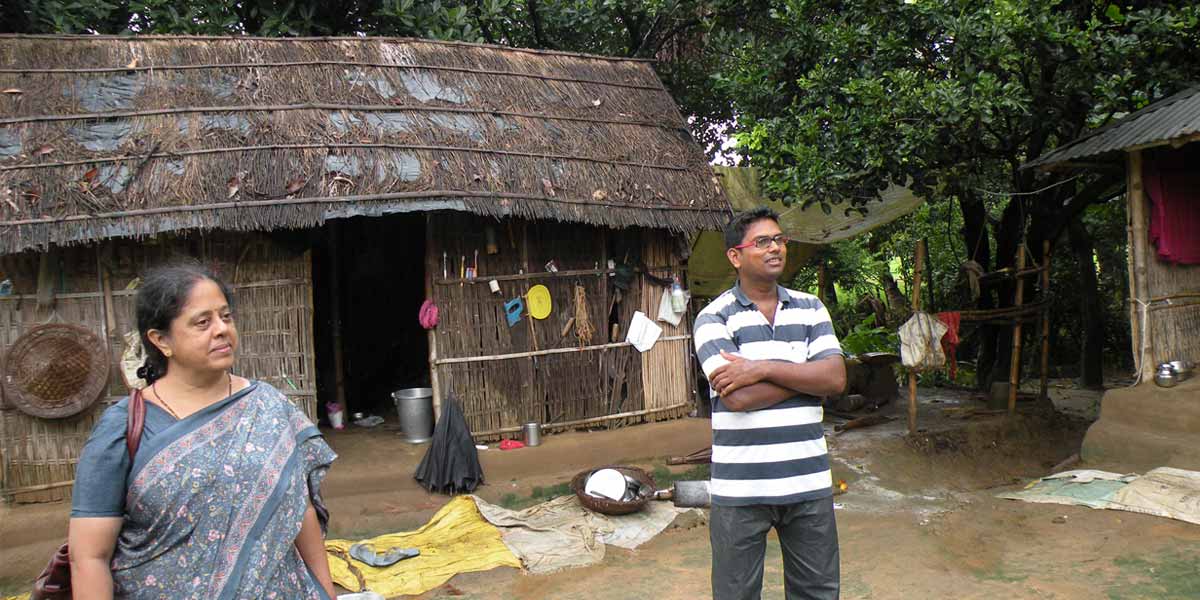
I continued taking down my notes on the beneficiaries, nodal persons, and the organization viz. NMTC. This village and the organization framework pose a typical narrative for the program documentation or the documentary. To put it simply, the sequence of this location would be somewhat of a middle ground in terms of appeal. Not extraordinary, not entirely dull either.
Our day ended there at Srishchandrapur and we rushed out to Bankur town to stay overnight at a guest house.
An off-the-route visit
Early next morning, we traveled to a village named Biskodor, where we didn’t shoot though. But it was an off-the-route visit where VIBSRAN’s other programs run in parallel. Not related to this documentation, I never miss opportune moments to capture. This village had a program running titled GAP or Good Agricultural Practices. Later we, on a different documentation purpose, came back to this village for shooting.
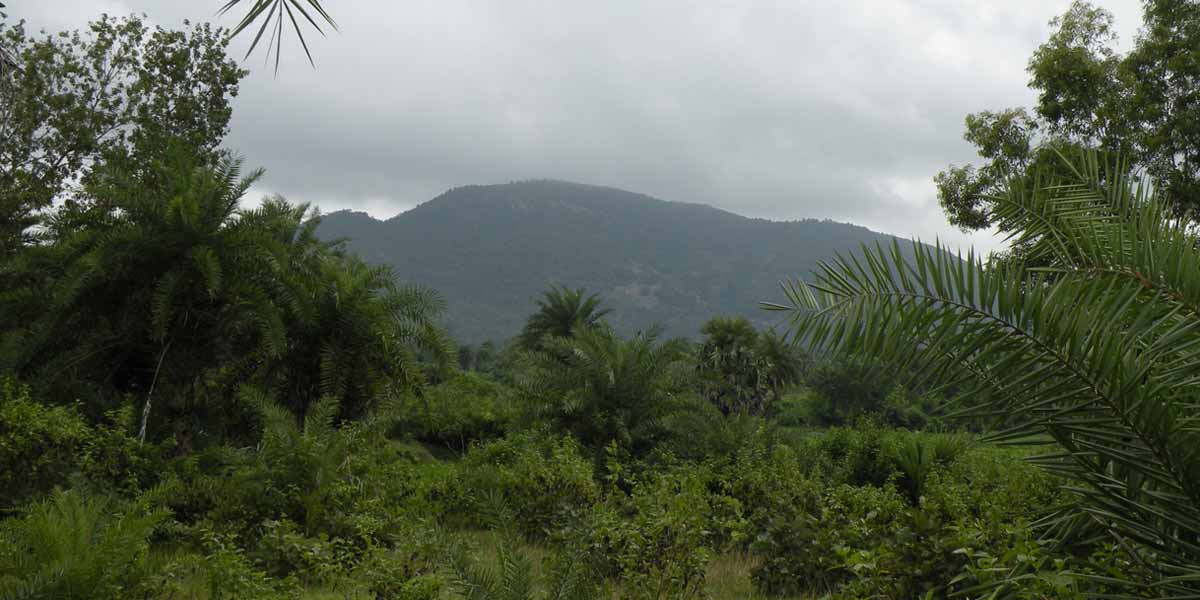
Spending a few hours in the morning there at this Bankra village, we reached out to the Shamayita Math.
Shamayita Math; Amarkanan, Gangajalghati, Bankura
The organization in Bankura is located in an area named Ganghajalghati and the village is Amarkanan. They work in the domain of farming and livestock in relation to the AICP. There were many vermicompost pits constructed by the organization and funded by the Govt of India.
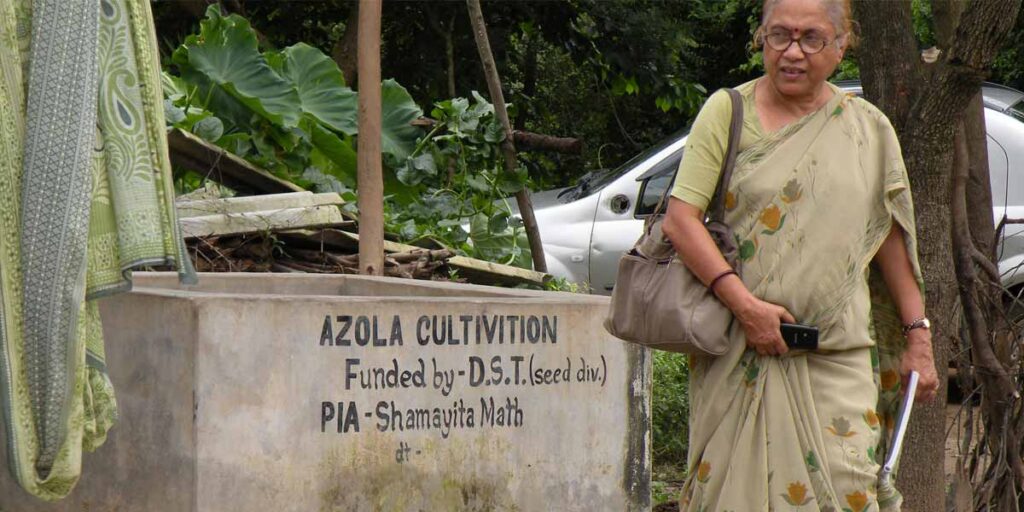
Under AICP, the organization brought many changes in the livelihood of the villagers, as they pointed out. Goat farming is one of the key components that helped the beneficiaries earn some money sustainably. We met a lady there in the village of Synardihi, named Jharna Bauri. I liked her story and the way she had become the leading bread earner.
I decided to portray her as the central character in the Shamayita Math sequence. Talked to her at length and said I would come back in a few days with my team to record her interview and her in action.
The goat rearing has really offered this poor villager a respite in the form of small liquid money. The program component with respect to goat rearing offers medical aid for this livestock and deworming. Arun Mondal, the nodal person accompanied us throughout and presented much information that we were not aware of. These are raw field data that could come as a graphic overlay or with the narrative of the documentary.
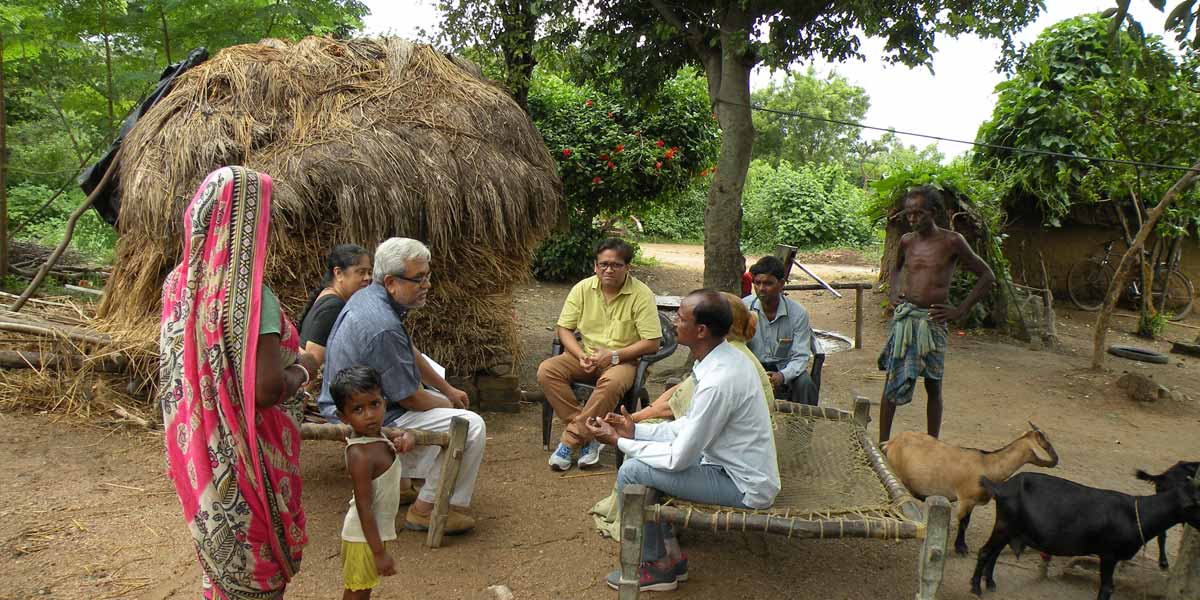
Bankura has red and laterite soil that doesn’t offer the best of the ecosystem and micro nutrients. Goat rearing has always been popular here, but what the villagers lacked is knowledge of scientific practices that could significantly reduce mortality and diseases. The program interventions brought some changes introducing a few practices among the cultivators. People like Arun Mondal act as the vehicles for such change.
We wrapped up at the village of Synardihi close to sundown and started our journey back to Kolkata, some 200 km apart.
Next: Recce in the state of Odisha [to be published]
